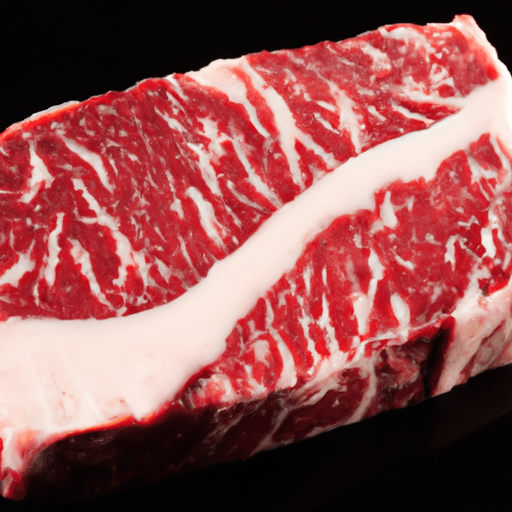The Perfect Cut: Exploring the Top Blade Steak
If you’re a steak lover, then you’re probably no stranger to the array of mouthwatering cuts available. One such versatile and flavorsome cut is the top blade steak. Whether you’re cooking it to impress guests or simply for a comforting weeknight meal, this cut is bound to excite your taste buds. In this article, we’ll delve into the tantalizing world of the top blade steak, exploring its taste, common uses in cooking, nutritional value, and even uncovering some interesting history and facts.
Taste and Texture Made to Please
The top blade steak, also known as the flat iron steak, is known for its exceptional taste and tenderness. Cut from the shoulder of the cow, this cut is taken from the chuck primal, specifically from the top blade roast. It boasts a rich, beefy flavor and a delightful marbling that enhances the juiciness of the meat.
What sets the top blade steak apart is its remarkable tenderness. When cooked properly, it boasts a melt-in-your-mouth texture that rivals some of the more expensive cuts. Its fine-grained structure and minimal connective tissue contribute to its tenderness and make it a pleasure to savor with every bite.
Versatility in the Kitchen
One of the top blade steak’s greatest attributes is its versatility in the kitchen. Its decadent flavor and tender profile make it suitable for various cooking methods and countless flavorful recipes.
One popular way to enjoy this cut is to simply grill it. Its marbling helps to keep it moist and succulent while giving it a satisfying crust. For those who prefer a rich and indulgent experience, pan-searing the steak with a knob of butter and aromatic herbs is a fantastic option. The top blade steak can also be broiled, braised, or even sliced thinly for stir-frying. Whichever method you choose, rest assured that the top blade steak’s exceptional taste will shine through.
Nutritional Benefits to Savor
Apart from its delectable taste, the top blade steak also offers nutritional benefits. It is a great source of high-quality protein, essential for building and repairing body tissues. Additionally, it contains vital nutrients such as iron, zinc, and B vitamins, which play a crucial role in maintaining good health. However, due to its relatively higher fat content compared to some leaner cuts, moderation is key when incorporating the top blade steak into a balanced diet.
Unveiling Fascinating History and Facts
Behind every cut of meat, there lies a story. The top blade steak, for one, has an intriguing history. Prior to its rise in popularity as an individual steak cut, the top blade was typically used for roasts or ground beef due to its toughness. However, in the early 2000s, meat researchers discovered a way to remove the tough sinew that ran through the center of the steak, effectively transforming it into a tender and flavorful cut. This breakthrough led to the birth of the top blade steak we know and savor today.
Give the Top Blade Steak a Spot on Your Plate
Whether you’re a seasoned steak aficionado or simply looking to explore new flavors, the top blade steak is undoubtedly worthy of a spot on your plate. Its remarkable taste, versatility in the kitchen, and nutritional benefits combine to make it a cut above the rest. So, next time you’re browsing the meat aisle or scanning a restaurant menu, keep an eye out for the top blade steak. Prepare it with care, savor it with delight, and let this exceptional cut elevate your culinary endeavors to new heights.
Top Blade Steak
Origin: The top blade steak, also known as the flat iron steak, comes from the chuck primal cut, specifically from the shoulder area of a beef carcass.
Common Uses: Top blade steak is a versatile cut that can be used in various cooking methods. It is often grilled, broiled, or pan-seared to medium-rare or medium doneness. This steak is known for its rich flavor and tenderness.
Nutritional Benefits: Top blade steak is a good source of protein, iron, zinc, and vitamin B12. It is relatively low in fat compared to other cuts, making it a healthier option for meat lovers. However, the exact nutritional value can vary depending on the specific cooking method and preparation.
Unique Properties: What sets the top blade steak apart is its unique shape and tenderness. The meat is shaped like an iron, hence the nickname “flat iron steak.” It is typically a uniform thickness throughout, although it may have a thin line of connective tissue running through the center. This line can be removed before or after cooking to enhance tenderness.
Historical Significance: The flat iron steak gained popularity in the early 2000s when researchers at the University of Nebraska, in collaboration with the National Cattlemen’s Beef Association, identified that the then-underutilized top blade cut had excellent tenderness and flavor. This led to a surge in demand for the steak, making it more widely available and enjoyed by meat enthusiasts around the world.
Remember that the top blade steak is often cooked to medium-rare or medium, as it can become tough if overcooked.




Use the share button below if you liked it.
It makes me smile, when I see it.